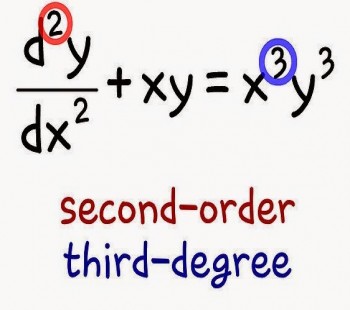Writing or executing pseudo final year projects is a no-do-without for a certificate course at any tertiary institution; it’s a project-based test that spans through a time frame. The students involved, undergraduates or post-graduates take some time to decide and choose the final year project topics to research on, get them approved and commence the research. This kind of deliberate research has a stipulated starter and ending; however, it doesn’t go beyond five phases no matter how comprehensive and in-depth the research is.
The five phases of undergraduate projects are the ones you may be familiar with and should not be mistaken with industrial project. In essence, I intend to put you through the five phases of final year projects at the undergraduate level with each phase explained in details.
Five phases of final year project explained…
Phase one – chapter one
The chapter one houses the introductory part of the research. Depending on the school of thought of the project researcher, the introduction could begin with a historical overview of the final year project topic, or background study of the topic.
Next is the statement of problem - this requires stating in simple prose the actual problem or issue that has informed or compelled your choice of research topic.
Next after that is positing your research objectives – you may need to state a general objective and then the individual objectives by bits taking time to number them individually for the sake of emphasis. What follows after this could be raising research questions. The research questions will have to gain their strength from the research objectives by way of presenting them in interrogative formats.
Next is what is often tagged the ‘operational definition of terms’. Operational definition of terms is a figure in your chapter that will warrant you to define more than a couple of terms, phrases and words the way it applies to your project topic and research in essence. You will basically define them in simple prose.
Scope or Delimitation is also a figure in project chapter one that permits you the researcher to state clearly the areas your research will and will not cover. In other words, you will be setting a demarcation for your research at this stage in chapter one.
There may be other figures under this phase, the dissimilarities varies with the project topic under study, the course of study, faculties, institutions as well as stipulated guidelines.
Phase two – Chapter two
The phase two of final year projects shoulders more of other people’s thoughts, ideas, position and opinion about the issues which shares some level relationship and understanding with your project topic.
First is the review of concepts – giving an appraisal of major concepts that anchors your research topic. The appraisal warrants that you include quotes or refer your audience to scholars who have raised an agreeable or contrary opinion about such concepts.
Next is review of opinions – it takes on the analysis of opinions that have been raised on issues that share close similarities with your research or even exactly. Sample the opinion of various scholars on that issue, criticize if necessary, agree and disagree when need be.
Review of studies is the next figure after that – only published or unpublished research works are permitted under this figure. The studies you will choose to review must be related to your project topic. To review related studies, State as a heading the author’s name, the year of publication, the research topic, the school where the research was carried out and the pages where you have extracted these information.
Elaborating your review, state the objective of the research topic under review, the research techniques used, the sample size and sample procedures adopted, the research findings and the conclusion. You will have to include your own assessment of significance to your final year project topic. You can review a minimum of two and maximum of five studies.
Next is the theoretical framework – the paradigms and principles that cements your final year project is required at this point.
Phase three – chapter three
The phase three of your final year project is where your own research actually begins by bringing to table the methods and measure your research will adopt to arrive at a conclusion. First begin with the research technique that you have adopted for the research. Depending on your research topic and your field of study, a research technique is a term used to describe the measure you intend to apply to get the desire result in your research. Like I said, it varies; it could be survey, experimentation, content analysis, interview, observation etc.
Population of study, sample size and sampling procedure follows in graduated sequence. Still in the third phase, the population of study defines clearly the entity you want to under study during your research. If it is one million or a thousand, be confident enough to state that. Coming to the sampling size, you decide purposively or otherwise the fraction of the research population you want to study. It is almost impossible to study your entire research population, so you take on a sample size that is manageable in figure. However you will have to generalize your conclusion on your population not on the sample size.
Next is the method of data gathering or collection – what informs the method of data collection is the research technique you have adopted. For instance, survey is a very popular research technique and questionnaire is the corresponding instrument for data gathering. So, you have to choose a corresponding method of data collection.
Method of data analysis is next – it describes also a corresponding method for data analysis. Sometimes it requires presentation of data in score and frequency, some in percentages etc.
Phase four – chapter four
This is the data analysis stage; the first is data presentation in tables. Depending on the research technique and instrument for data gathering used, the table used to present date explains the research objectives; in another instance, the table takes on the question in the questionnaire and sometimes too takes on the research questions.
Discussion of finding follows immediately after that – you have to discuss I earnest the finding that the data have revealed and its significance on your final year project research topic.
Phase five – chapter five
This is where you meet the end of the research – this phase is quite simple and easy. It’s usually pegged on summary, conclusion and recommendation. They seem alike but not exactly.
Summary like the name implies wraps up the research in a couple or paragraphs or more. What will you talking about? Simple - the progression of the research from the project topic to the research findings.
Conclusion – this is where you state what your resolution is based on your research findings. Remember you have been working with a project topic; so your research conclusion serves as an answer to your research topic.
Recommendation – if you perceive that people are still in the dark on the issue you have just discovered, you could recommend helpful measures to fix it.
Wrap-up
No matter how comprehensive your research is, it sure won’t extend beyond these five stages. Note also that some things may change along the line; reason is that there is no hard and straight way to present a final year project. The little variations varies with your institution, your project topic, you department or stipulated guidelines.






